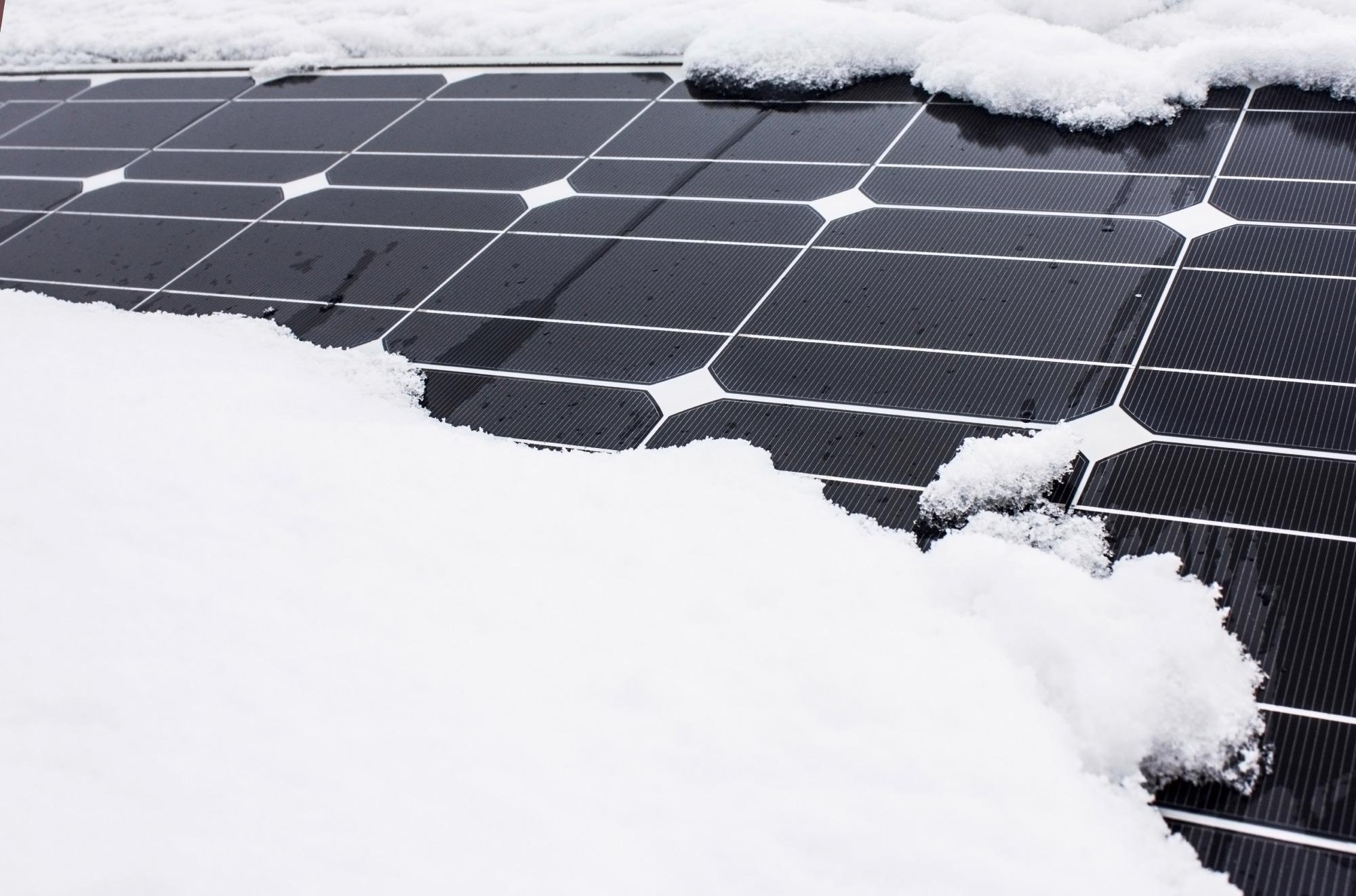A study team led by the University of Michigan has shown a cost-effective, clear coating that reduced the accumulation of snow and ice on solar panels, thereby enabling them to produce up to 85% more energy in preliminary testing.

Image Credit: GGG999/Shutterstock.com
Icephobic coating for keeping snow off of solar panels
Video Credit: University of Michigan.
This progress could greatly increase the productivity of solar panels in regions with cold climates.
The coating is composed primarily of PDMS or PVC plastic and silicon or vegetable-based oils. It can be brushed or sprayed on in cold weather and, in its present iteration, can detach ice and snow for up to nearly a year.
Renewable energy is really taking off right now, but snow is a huge problem in northern climates. Solar panels might lose 80 or 90% of their generating capacity in the winter. So figuring out a way for them to continue generating energy throughout the year was an exciting challenge.
Anish Tuteja, Study Lead and Professor of Materials Science and Engineering, University of Michigan
Tuteja led the study in partnership with Sandia National Laboratories and the University of Alaska.
While Tuteja’s lab has created several effective ice-shedding coatings in the past, he explains that engineering a coating that can passively shed both snow and ice signifies a special challenge.
Ice is relatively dense and heavy, and our previous coatings used its own weight against it. But snow can be 10 times less dense than ice, so we weren’t at all certain that the tricks we use on ice would translate to snow.
Anish Tuteja, Study Lead and Professor of Materials Science and Engineering, University of Michigan
To discover the appropriate coating, Tuteja and his team turned to two main properties that have driven ice-shedding coatings in the past: low adhesion strength and low interfacial toughness. Low surface adhesion is essentially slipperiness.
For small areas, slipperiness alone works well. But for bigger surfaces, more force is required to slide ice and snow off them. For larger areas, it may be required to break up the adhesion totally. This is how low interfacial toughness works — it forms cracks between the ice and the panel. These spread along the panel, irrespective of their size, detaching the ice and snow.
The researchers aimed to strike exactly the correct balance of low interfacial toughness and low surface adhesion that would detach both ice and snow from both large and small surfaces.
They began with very sturdy PVC plastic for low interfacial toughness, and blended in a small quantity of vegetable oil that provided the PVC a low enough surface adhesion to deliver the best of both worlds. They also developed a second material that functions equally well using PDMS plastic and silicon-based oil.
The University of Michigan scientists partnered with the University of Alaska to try out the material on a solar field in Fairbanks, Alaska, applying the coatings to a subdivision of panels that were observed by automated cameras for around two weeks.
The tests revealed that the coated panels had an average snow and ice coverage of about 28% over a complete winter season, in comparison to approximately 59% for the uncoated panels.
The coating was created as part of a project directed by Sandia National Laboratories, a U.S. Department of Energy research and development lab, with financial backing provided by the DOE’s Solar Energy Technologies Office
As the cost of solar energy has dropped and profitability has climbed, much of the growth in solar energy in recent years has been in northern states, where snow is common. Snow-phobic coatings, if we can demonstrate their long-term efficacy, will make solar power more reliable and more affordable in snowy regions, helping accelerate our nation’s transition to a more solar-dominated energy economy.
Laurie Burnham, Principal Investigator, University of Michigan
Tuteja says that, while the coating’s present iteration could be used directly, the team plans to modify it a little more with the aim of creating a coating that can endure up to five years.
Details of the study have been published in Advanced Materials Technologies.
Other scientists on the project include former U-M materials science and engineering graduate researcher Abhishek Dhyani; Christopher Pike and Erin Whitney at the Alaska Center for Energy and Power at the University of Alaska; and Jennifer Braid at the Photovoltaics and Materials Technology Department of Sandia National Laboratories.
Journal Reference:
Dhyani, A., et al. (2021) Facilitating Large-Scale Snow Shedding from In-Field Solar Arrays using Icephobic Surfaces with Low-Interfacial Toughness. Advanced Materials Technologies. doi.org/10.1002/admt.202101032.